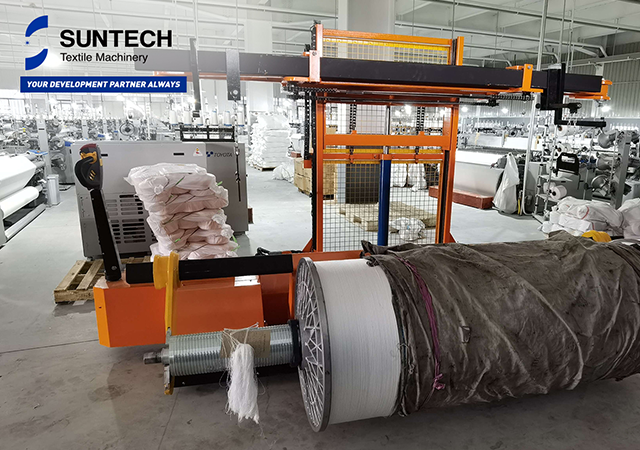The Warping Procedure within the Textile Industry
Warping, in textile manufacturing, refers to the systematic winding of warp ends from numerous winding packages, including cones and cheeses, onto a shared package known as a Warp Beam.
The Importance of Warping:
Creation of Beam Warp Yarn: Warping is pivotal in constructing beam warp yarns, which are essential for the weaving process.
Formation of Parallel Yarn Sheet: The process also facilitates the creation of a parallel yarn sheet, a fundamental element in weaving.
Rectification of Yarn Faults: Warping aids in modifying yarn imperfections such as variations in thickness, thin spots, and large knots.
Predetermined Yarn Length: It ensures the precise winding of a predetermined length of yarn, essential for maintaining consistency in production.
Combination of Packages: Warping allows the combination of multiple small packages into a unified beam, streamlining the weaving process.
Attainment of Long Warp Yarn Length: This process is instrumental in achieving the required extended length of warp yarn.
Varieties of Warping:
Direct Warping - Beam Warping: In this method, yarns are transferred directly from individual packages to a beam in a single-step process.
Sectional Warping - Patterns Band or Drum Warping: Sectional warping involves the creation of patterns using bands or drums, offering a different approach to direct warping.
The fundamental contrast between these two systems lies in the fact that the indirect system permits the creation of a loom warp using a single machine, while the direct system necessitates the use of two machines.
Direct warping involves the immediate transference of yarns from single-entry packages to a beam. This entails an equal number of packages in the grill area as there are ends on the beam. However, in the case of a magazine creel, a connection between the tail of one wound package and the beginning of another is established for smoother package transfers.

Beam Warping:
A weaver's beam might entail up to 10,000 ends. Yet, directly producing such a configuration would require an equivalent number of packages, which could be unwieldy. To address this, warper's beams are commonly created, each accommodating around 1,000 ends. These beams are then combined during the slashing (sizing) stage. While patterned warper beams are rarely produced using the direct system, any pattern integration is executed by merging beams of different colors during the later slashing stage. If pattern weaving is desired, this limitation can be overcome by transitioning to a pattern weaving setup.
Fundamental Requisites of Warping:
- Uniform Spacing of Yarns in the Sheet
- Consistent Yarn Tension in the Sheet
- Predetermined Yarn Length in the Sheet
- Predetermined Number of Ends in the Sheet
- Absence of Broken Ends in the Beam
The Warping Process Involves:
- Cone Winding
- Creeling
- Control System
- Reed
- Measuring Device
- Winding Onto Beam
Attributes of an Optimal Warp:
- Uniform and Adequately Strong
- Consistent Cross-Section
- Even Warp Tension
- Uniform Sizing
- Minimal Hairiness and Cleanliness
- Minimal Knots
- Appropriate Knot Types and Sizes
- Free from Neps, Slubs, and Loose Fibers
- Parallel Arrangement of Warp Yarn on the Weaver's Beam
The following are the important aspects of assessing the beam quality:
Incorrectly mended broken hands;
The following are the important aspects of assessing the beam quality:
Incorrectly mended broken hands;
Uniformity of yarn tension;
Vertical threading system:
Bulged/Sunken selvedge ends;
Condition of beam flange;
Slough offs, wild yarn on warper's beam;
Damaged beam surface;
Uneven beam density;
In the textile industry, automated warp beam trolleys can handle tasks such as moving and stacking fabric rolls or transporting textile machinery. SUNTECH electric warp beam trolley(ST-MBT-02I) minimizes the risk of accidents and enhances overall efficiency while saving time and labor costs. It boasts a compact structure without compromising its heavy lifting capacity. This design ensures that the warp beam trolley can navigate narrow spaces and tight corners effortlessly. Despite its compact size, it has the strength and capability to handle heavy loads, making it suitable for a wide range of applications within the textile industry.
In addition, SUNTECH Textile Machinery also offers intelligence warp beam stacker to solve the beam storage issues to help maintain the warp beam better stored and managed.




